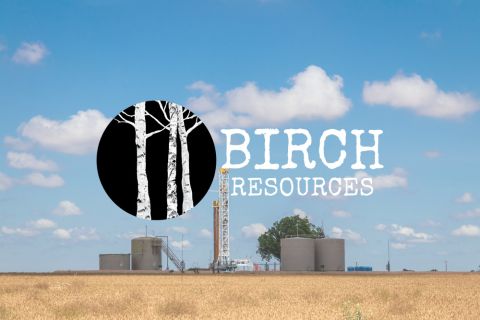Gehrig and Ruth are missing from the box scores and nobody’s dancing the Charleston in Midland’s speakeasies, but as far as the oil and gas industry is concerned, the roaring ’20s have returned to the Permian Basin.
They’re drilling for hydrocarbons with the urgency of the era when Ira Yates sold oil leases from his front porch in Pecos County, Texas. But this time, they’re going at it horizontally.
For the midstream, this period in the Permian is the cat’s pajamas.
“We’re seeing fantastic returns in the play—40% to 100% [internal rates of return],” Tomas Ackerman, managing director of investment firm Natural Gas Partners, told Midstream Business. “It’s one of the best plays in the world.”
Supply side
The Permian Basin sweeps across 80,000 square miles from West Texas into southeastern New Mexico. It is home to one of the world’s thickest deposits of rocks from the Permian geologic period of 299 million to 251 million years ago in the late Paleozoic era. The light, sweet crude it produces ranges in gravity from 38° to 42° API, which is similar to the crude from the Eagle Ford Shale.
And there’s plenty of it: The U.S. Geological Survey estimates that original oil in place in the Permian totals 100 billion barrels (bbl). Technically recoverable reserves for 18 existing conventional fields were 2.7 billion bbl in 2012, and that number will continue to ascend as evolving exploration technology is brought to bear. Much of the oil is located in stacked reservoirs like the Wolfcamp, Leonard, Bone Spring and Cline, which require horizontal drilling to reach.
Since Ohio Oil, forerunner of Marathon Oil, struck pay on Oct. 26, 1926, the culture of the region has revolved around oil and gas—that is, oil and gas and football. The legendary Yates Field remains among the U.S. Energy Information Administration’s (EIA’s) top 50 oil and lease condensate fields in the country, as ranked by proved reserves. The Railroad Commission of Texas estimates that the Permian has produced around 29 billion bbl of crude oil and 75 trillion cubic feet (Tcf) of gas in its storied nine decades.
In New Mexico’s Permian acreage, three fields—Hobbs, Vacuum and Eunice Monument—rank among the EIA’s top 100. While its yearly output of crude oil was less than one-tenth of production in Texas, New Mexico still ranked No. 6 among states in 2013, ahead of Louisiana and Colorado, and just behind Oklahoma. From 2010 to 2013, New Mexico’s production growth of 51% trailed only Colorado’s 93% and Oklahoma’s 62%, according to EIA statistics.
Permian, the oil patch elder, has been revived with an infusion of the lifeblood of the North American shale revolution: hydraulic fracturing fluid. The Railroad Commission counts 7,000 permits for drilling in Texas alone. Oil production, which sagged to an annual total of 251 million bbl in 2005, has been rising since then, topping 300 million bbl in 2012. The Permian’s 82,000 estimated active wells produce 57% of total crude oil production in Texas.
Solution for lost generation
During the Coolidge administration, when the Permian’s development was young, a combination of natural reservoir pressure and gravity, along with pumps, kept its hydrocarbons flowing. But primary development and production typically results in recovery of only 10% of a play’s original oil in place, hence the need for enhanced oil recovery (EOR) techniques later in the life cycle to coax an additional 20% to 40% of a well’s oil that does not easily move to the surface. In the tertiary phase of a field, 30% to 60% of a play’s reserves can be recovered, according to the U.S. Department of Energy.
The Permian’s EOR activities have driven demand for CO2, which expands when injected into wells, pushing oil to the production wellbore. Meeting part of that demand is Kinder Morgan Energy Partners LP, which plans to build the 213-mile, 300 million cubic feet per day (MMcf/d) Lobos pipeline to move CO2 from its St. Johns field in Apache County, Ariz., to the Cortez pipeline that it operates in Torrance County, N.M.
Kinder Morgan is investing $1 billion in the Lobos project. It will spend $300 million on the pipeline and $700 million to drill wells and build field gathering, treatment and compression facilities at the St. Johns field. Assuming environmental and regulatory approval hurdles are cleared, the project should be in service by the third quarter of 2016.
Investing heavily in midstream
Rigs designated for horizontal drilling are rotating into the Permian from other markets, a Hart Energy survey in March found. The drilling escalation is powering a surge in daily crude production that the EIA estimates hit 1.41 million bbl/d in March. Midstream operators are scrambling to piece together the infrastructure necessary to avoid bottlenecks.
“We are excited about the growing production forecast in the Permian Basin,” Bruce Heine, Magellan Midstream Partners’ director of government and media affairs, told Midstream Business. Tulsa, Okla.-based Magellan has two major pipeline systems originating in the Permian.
“Our Longhorn Pipeline, which has been safely transporting crude oil from the Permian to Houston since the second quarter of 2013, has a capacity of 225,000 bbl/d,” Heine said. “We are currently increasing the capacity of Longhorn to 275,000 bbl/d.
“Our second project is the BridgeTex Pipeline, which is a 50/50 joint venture with Occidental Petroleum,” he said. “This system, which is currently under construction, will have a capacity of 300,000 bbl/d when it becomes operational in mid-2014.”
Ackerman’s Natural Gas Partners is backing PennTex Midstream Partners LLC’s expansion in the Delaware Basin, the southwestern slice of the Permian. PennTex purchased a majority interest in Atlantic Midstream LLC in February and renamed it PennTex Permian. By the end of the first quarter, PennTex Permian put low- and intermediate-pressure gathering pipelines and associated compression into service. The company sees a July completion date for its 60 MMcf/d cryogenic natural gas processing plant in Reeves County, Texas, in the Wolfcamp play.
“We are very excited about the opportunity to own assets in an area like the Delaware Basin,” Mike Moran, chief commercial officer of PennTex Midstream Partners LLC, told Midstream Business. “The increasing activity levels throughout the region played a significant role in our decision to acquire these midstream assets.”
Crestwood Midstream Partners is also engaged in the natural gas-rich Delaware. The Houston-based company is expanding its 107,000-acre Willow Lake Project in Eddy County, N.M., by converting part of its Las Animas natural gas gathering system into rich gas service and building a cryogenic gas processing plant with a capacity of 20 MMcf/d.
Denver-based DCP Midstream Partners’ celebrated $1.15 billion dropdown from DCP Midstream closed in April, giving the partnership a one-third interest in the 720-mile Sand Hills NGL pipeline, which will move product from the Permian Basin and Eagle Ford Shale to the Texas Gulf Coast and Mont Belvieu market hub.
Sunoco Logistics Partners’ Permian Express 2 pipeline is expected to begin carrying crude 300 miles from multiple points in the Permian Basin to the Gulf Coast in the second quarter of 2015. The line will have a capacity of 200,000 bbl/d.
Sunoco recently partnered with Swiss trader Vitol to create a 50/50 venture called SunVit Pipelines. The business will build a 40-mile crude pipeline from Midland to Garden City, Texas, where it will connect to the Permian Express 2 line. SunVit is also expected to start operation sometime in 2015.
Vitol has been involved in the Permian Basin through its stake in Blueknight Energy Partners, which operates storage facilities for 15 million bbl of crude and oil products, as well as 1,264 miles of pipeline. Blueknight’s Pecos River line began moving 150,000 bbl/d of crude to Magellan’s reversed Longhorn pipeline that moves the oil the rest of the way to Gulf Coast refineries. Blueknight has a 30% interest in the line and is considering an extension into New Mexico.
A new gas age
Going forward, expect the Permian to take several years to fully develop and for big operators to gobble up the small. That’s because the growth will need to be powered by immense amounts of capital.
“We believe the Permian needs to be developed by larger oil and gas firms with strong balance sheets capable of handling the vast capital requirements to develop the play in the most economically efficient manner,” wrote Andrew Byrne, manager of global E&P for IHS Herold in his unconventional energy blog.
Ackerman of Natural Gas Partners looks forward to being part of it, especially in terms of investment opportunity in the midstream space.
“We are very active in the Permian—we have several portfolio companies on the upstream side, both in the Midland and Delaware basins,” he said. “We’ve been fortunate enough to partner with great teams who have really been on the cutting edge of the horizontal movement in the Permian.”
Ackerman is bullish on the Permian because its economics, as a result of advances in horizontal drilling and completion, compare well with other plays, “so the ‘prize’ continues to expand.”
“In the midstream business, the key is to be responsive to a producer’s needs,” Ackerman added. “The PennTex team has managed large midstream businesses including Southern Union and parts of the Energy Transfer assets and has always delivered for producers. That’s the key to being competitive in a hot region like the Permian: You have to deliver on what you promise.”
Recommended Reading
EY: How AI Can Transform Subsurface Operations
2024-10-10 - The inherent complexity of subsurface data and the need to make swift decisions demands a tailored approach.
E&P Highlights: Oct. 7, 2024
2024-10-07 - Here’s a roundup of the latest E&P headlines, including a major announcement from BP and large contracts in the Middle East.
Hot Permian Pie: Birch’s Scorching New Dean Wells in Dawson County
2024-10-15 - Birch Resources is continuing its big-oil-well streak in the Dean formation in southern Dawson County with two new wells IP’ing up to 2,768 bbl/d.
Oceaneering Acquires Global Design Innovation
2024-10-30 - Oceaneering purchased Global Design Innovation, the only provider certified by the United Kingdom Accreditation Service (UKAS) to perform remote visual inspection using point cloud data and photographic images.
Comments
Add new comment
This conversation is moderated according to Hart Energy community rules. Please read the rules before joining the discussion. If you’re experiencing any technical problems, please contact our customer care team.




